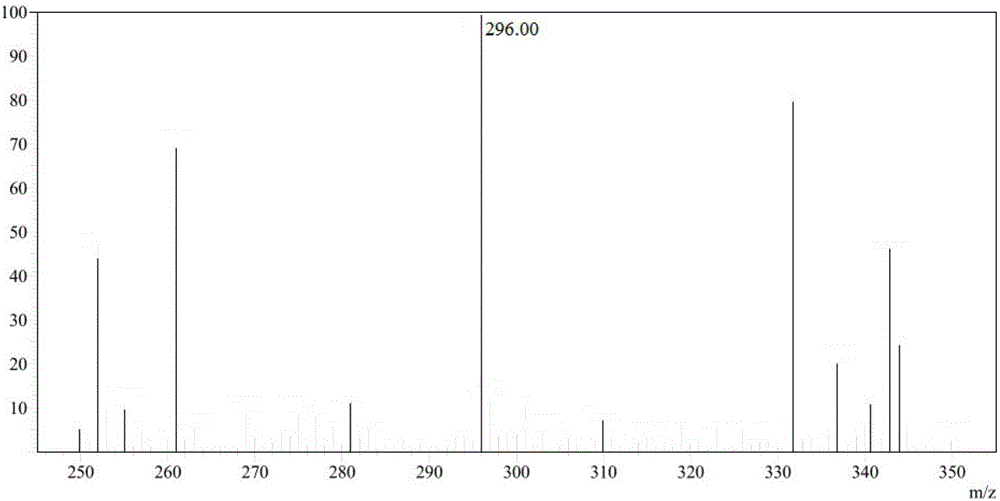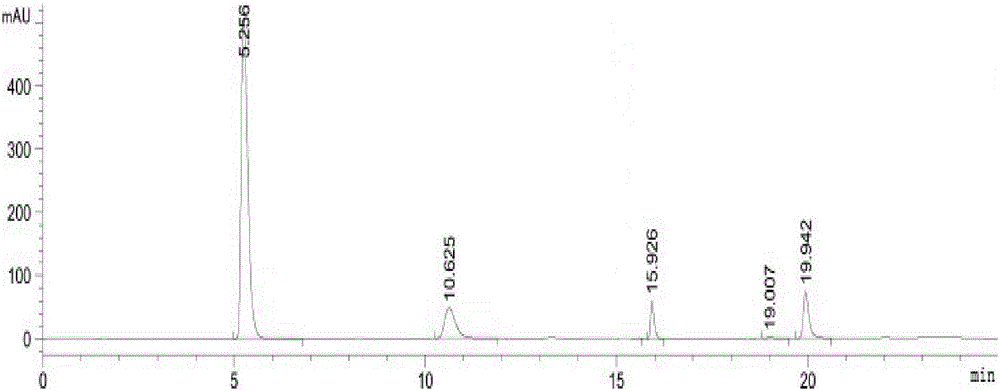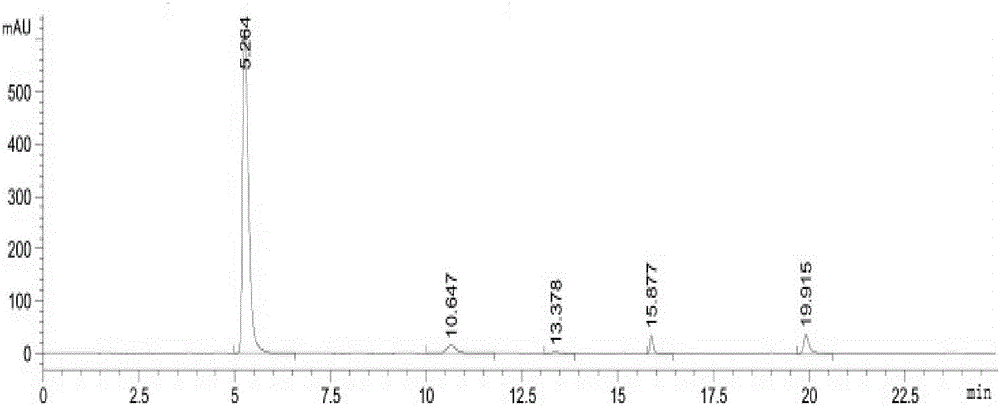Bioconversion method of L-hydroxyproline
A biotransformation and hydroxyproline technology, applied in the field of L-hydroxyproline biotransformation, can solve the problems of low optical purity and low yield, and achieve simple process flow, strong stereoselectivity and ratio reasonable effect
- Summary
- Abstract
- Description
- Claims
- Application Information
AI Technical Summary
Problems solved by technology
Method used
Image
Examples
Embodiment 1
[0050] L- Biotransformation method of hydroxyproline , the reaction was carried out in a 1L shake flask, and the reaction system was controlled to 300mL, including 20g of L-proline and 10g of α-ketoglutarate as substrates, and 4.2g of proline-4-hydroxylase engineering The whole cell of the bacteria is used as a catalyst, and a surfactant and an additive are added to establish a biotransformation system to carry out a transformation reaction to obtain a transformation solution containing L-hydroxyproline. Among them, the surfactant is composed of 0.011g sorbitan ester, 0.132g Tween 80, and 0.004g triton X-100. The additive is a mixture of 0.048g ferrous sulfate, 0.035g ferrous chloride and 0.014g ferrous nitrate. The temperature of the biotransformation system is controlled at 35° C.; the pH value of the biotransformation system is controlled at 6; the transformation reaction is carried out in a shaking table, and the rotating speed of the shaking table is controlled at 200 ...
Embodiment 2
[0058] L- Biotransformation method of hydroxyproline , the reaction was carried out in a 5L beaker, and the reaction system was controlled to 2L, including 200g of L-proline, 65g of α-ketoglutarate as substrates, and 40g of proline-4-hydroxylase engineering bacteria Cells are used as catalysts, surfactants and additives are added to establish a biotransformation system for transformation reactions, and transformation liquid containing L-hydroxyproline is obtained. Among them, the surfactant is composed of 0.076g sorbitan ester, 0.703g Tween 80, and 0.022g triton X-100. Additive is the mixture of 1g ferrous sulfate, 0.667g ferrous chloride, 0.333g ferrous nitrate. The temperature of the biotransformation system is controlled at 37° C.; the pH value of the biotransformation system is controlled at 6.5, and the mechanical stirring speed is controlled at 200 r / min.
[0059] The conversion solution containing L-hydroxyproline is purified, comprising the following steps:
[006...
Embodiment 3
[0066] L- Biotransformation method of hydroxyproline , the reaction was carried out in a 50L fermenter, and the reaction system was controlled to 30L, including 2400g of L-proline and 800g of α-ketoglutarate as substrates, and 800g of proline-4-hydroxylase engineering The whole cell of the bacteria is used as a catalyst, and the biotransformation system is established by adding surfactants and additives to carry out the transformation reaction, and the transformation liquid containing L-hydroxyproline is obtained. Wherein, the surfactant consists of 12.8g of sorbitan ester, 32g of Tween 80, and 3.2g of Triton X-100. The additive is a mixture of 3.2g ferrous sulfate, 4g ferrous chloride and 0.8g ferrous nitrate. The temperature of the biotransformation system is controlled at 40° C.; the pH value of the biotransformation system is controlled at 8, and the mechanical stirring speed is controlled at 400 r / min.
[0067] The conversion solution containing L-hydroxyproline is pu...
PUM
| Property | Measurement | Unit |
|---|---|---|
| optical purity | aaaaa | aaaaa |
| optical purity | aaaaa | aaaaa |
| optical purity | aaaaa | aaaaa |
Abstract
Description
Claims
Application Information
 Login to View More
Login to View More - R&D
- Intellectual Property
- Life Sciences
- Materials
- Tech Scout
- Unparalleled Data Quality
- Higher Quality Content
- 60% Fewer Hallucinations
Browse by: Latest US Patents, China's latest patents, Technical Efficacy Thesaurus, Application Domain, Technology Topic, Popular Technical Reports.
© 2025 PatSnap. All rights reserved.Legal|Privacy policy|Modern Slavery Act Transparency Statement|Sitemap|About US| Contact US: help@patsnap.com



